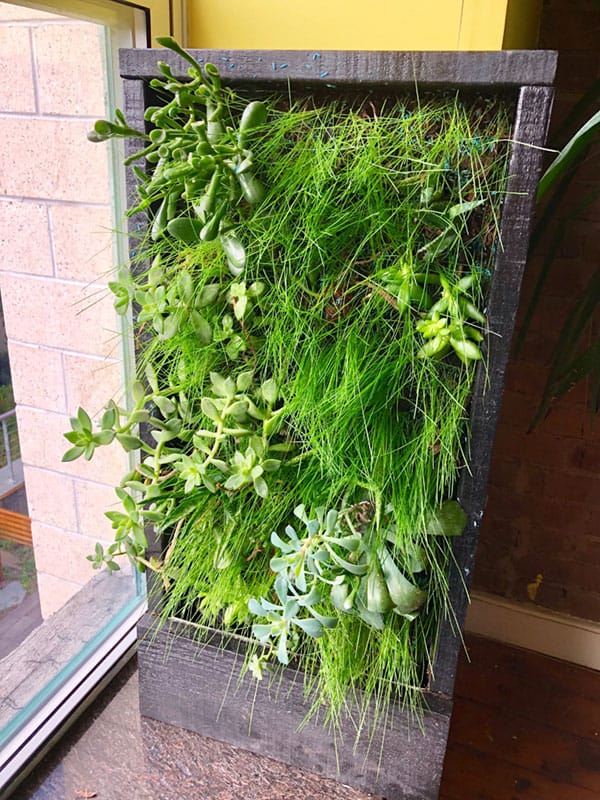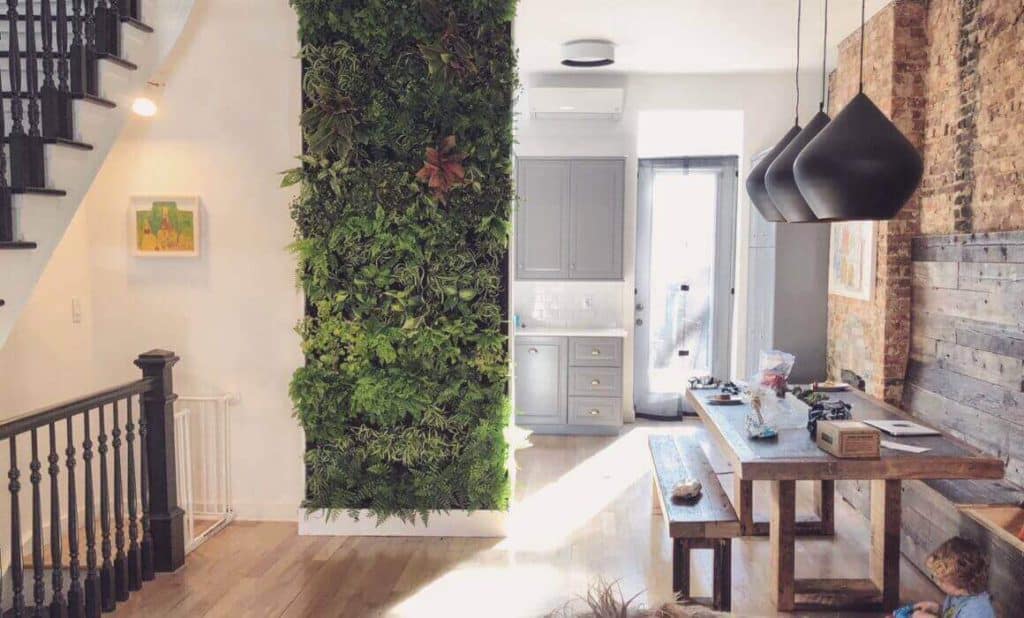Here is a cool article by Brownstoner.com that features a living wall I installed in a brownstone in Bedstuy, Brooklyn. One thing I noticed in the article is the two other living wall installers claim living walls are a lot of maintenance. They charge a lot of money to maintain the walls. I don’t thing this is necessary. Their walls have not been set up right. It’s that simple. Build the wall correctly and the wall is low maintenance.
My walls don’t need a lot of maintenance. As a living wall installer I’ve made all the mistakes in the book. The wrong plants, bad growing medium, faulty irrigation. I used to think living walls were high maintenance and risky. But I loved them so I persevered. Over time I got it down. Now it runs like clockwork.
 The only issue I have is when somebody (cleaning lady, careless plumber) turns off the water. Plants die without water :). We’ve now zip tied the shut off valve and labeled the hell out of it. You’d have to be intentionally wanting to kill the wall if you turn off the water we have it so well labeled.
The only issue I have is when somebody (cleaning lady, careless plumber) turns off the water. Plants die without water :). We’ve now zip tied the shut off valve and labeled the hell out of it. You’d have to be intentionally wanting to kill the wall if you turn off the water we have it so well labeled.
But apart from that I’ve come to see that a correctly installed living wall is actually very low maintenance. The water is correctly scheduled on a timer and the rest takes care of itself. Correctly watered plants that have the right amount of light are designed to thrive.
I used to think they’re plants: plants need maintenance. But all maintenance revolves around water. If you have to water a plant by hand that takes work but if you water incorrectly that’s even more work. If you forget to water then some leaves die and you have to trim the plant. If you water too much more leaves die and you have to trim the plant. All these leaves dying is due to inconsistent watering that stresses the plant out.
A living wall watering system is automated and the watering schedule is set by a professional. The plants don’t get stressed and leaves don’t die. No maintenance. As a side note we install only evergreen tropical plants. Because they aren’t seasonal they don’t have the natural leaf die off of a seasonal plant. Another time saver.
In nature you don’t have people running around maintaining the plants. In the end the trick to a healthy living wall is to build a wall that replicates nature as closely as possible. Once you’ve done that the plants take care of themselves.
The maintenance is then more about little things that would need to be done in any healthy garden. As plants grow their shape changes. So you might have one plant crowding out another. Or you might get a bald spot as a plant grows in a different direction. This is natural.
And it’s wonderfully creative. It’s like painting a painting that changes over time. You might decide one color is becoming too dominant. So you swap some plants out. Or it’s getting too bushy, so you trim it in areas. It’s very similar to the artistic process. And very satisfying.
For this reason I suggest the owner get into it and take care of these things themselves. It’s pretty easy if you have the interest. Otherwise I suggest quarterly visits by a professional. When we visit we trim plants that are too aggressive and we might move one or two plants that are being crowded out. Once in a while a plant might die so we replace it. We fill in any bald spots.
But most importantly, when we visit we spend a lot of time looking at the water. Is the watering schedule correct? Not too dry, not too wet. We replace the watering meter battery. And lastly we add food to the fertilizer dispenser since living walls are mostly hydroponic (i.e. they derive their nutrients from the water not the soil – there is no soil).
So check out the article on Brownstoner!

